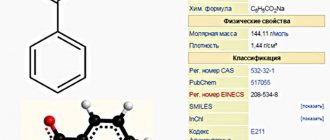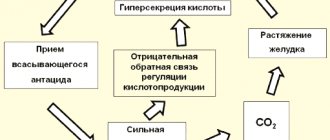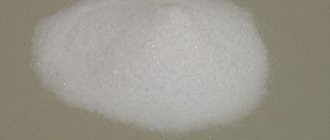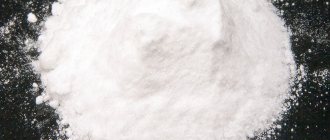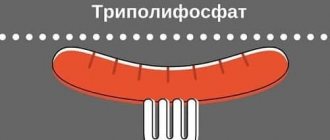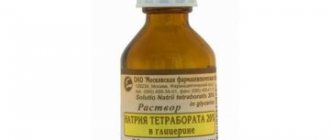Home | About us | Delivery | Advertisers | Login | Registration
Delivery on Sundays and holidays does not work!
- Medicines
- dietary supplementsVitamins
- Categories from A to Z
- Brands from A to Z
- Products from A to Z
- Medical equipment
- beauty
- Child
- Care
- Honey products appointments
- Herbs and herbal teas
- Medical nutrition
- Journey
- Making medicinesStock
Pharmacy online is the best pharmacy in Almaty, delivering medicines to Almaty. An online pharmacy or online pharmacy provides the following types of services: delivery of medicines, medicines to your home. Online pharmacy Almaty or online pharmacy Almaty delivers medicines to your home, as well as home delivery of medicines in Almaty.
my basket
Apteka84.kz is an online pharmacy that offers its customers medicines, medicinal and decorative cosmetics, dietary supplements, vitamins, baby food, intimate products for adults, medical equipment and thousands of other medical and cosmetic products at low prices. All data presented on the Apteka84.kz website is for informational purposes only and is not a substitute for professional medical care. Apteka84.kz strongly recommends that you carefully read the instructions for use contained in each package of medicines and other products. If you currently have any symptoms of the disease, you should seek help from a doctor. You should always tell your doctor or pharmacist about all the medicines you take. If you feel you need further help, please consult your local pharmacist or contact our GP online or by telephone.
© 2022 Pharmacy 84.
Caffeine sodium benzoate, 10 pcs., 100 mg, tablets
Psychostimulant and analeptic drug, a derivative of methylxanthine. Competitively blocks central and peripheral A1 and A2 adenosine receptors. Inhibits the activity of PDE in the central nervous system, heart, smooth muscle organs, skeletal muscles, adipose tissue, promotes the accumulation of cAMP and cGMP in them (this effect is observed when used only in high doses). Stimulates the centers of the medulla oblongata (respiratory and vasomotor), as well as the n.vagus center, has a direct stimulating effect on the cerebral cortex. In high doses, it facilitates interneuronal conduction in the spinal cord, enhancing spinal reflexes.
Increases mental and physical performance, stimulates mental activity, motor activity, shortens reaction time, temporarily reduces fatigue and drowsiness. In small doses, the stimulating effect predominates, and in large doses, the effect of depression of the nervous system predominates.
Speeds up and deepens breathing. Usually it has a positive ino-, chrono-, bathmo- and dromotropic effect (since the effect on the cardiovascular system consists of a direct stimulating effect on the myocardium and a simultaneous stimulating effect on the n.vagus centers, the resulting effect depends on the predominance of one or another action). Stimulates the vasomotor center and has a direct relaxing effect on the vascular wall, which leads to dilation of the vessels of the heart, skeletal muscles and kidneys, while the tone of the cerebral arteries increases (causes a narrowing of the blood vessels of the brain, which is accompanied by a decrease in cerebral blood flow and oxygen pressure in the brain).
Blood pressure changes under the influence of vascular and cardiac mechanisms of caffeine's influence: with normal initial blood pressure, caffeine does not change or slightly increases it; with arterial hypotension, it normalizes it.
It has an antispasmodic effect on smooth muscles (including a bronchodilator effect), and a stimulating effect on striated muscles.
Increases the secretory activity of the stomach.
It has a moderate diuretic effect, which is due to a decrease in the reabsorption of sodium and water ions in the proximal and distal renal tubules, as well as dilation of renal vessels and increased filtration in the renal glomeruli.
Reduces platelet aggregation and histamine release from mast cells.
Increases basal metabolism: increases glycogenolysis, increases lipolysis.
Caffein-benzoate sodium solution for injections
Caffeine is a methylxanthine that has a psychostimulating and analeptic effect. Competitively blocks central and peripheral A1 and A2 adenosine receptors. Inhibits the activity of phosphodiesterase in the central nervous system, heart, smooth muscle organs, skeletal muscles, adipose tissue, promotes the accumulation of cAMP and cGMP in them (this effect is observed when using only high doses of caffeine). Stimulates the centers of the medulla oblongata (respiratory and vasomotor), as well as the n.vagus center, has a direct stimulating effect on the cerebral cortex. In high doses, it facilitates interneuronal conduction in the spinal cord, enhancing spinal reflexes. Increases mental and physical performance, stimulates mental activity, motor activity, shortens reaction time, temporarily reduces fatigue and drowsiness. In small doses, the stimulating effect predominates, and in large doses, the effect of depression of the nervous system predominates. It quickens and deepens breathing, usually has a positive ino-, chrono-, batmo- and dromotropic effect (since the effect on the cardiovascular system consists of a direct stimulating effect on the myocardium and a simultaneous stimulating effect on the n.vagus centers, the resulting effect depends on the predominance of that or other action). Stimulates the vasomotor center and has a direct relaxing effect on the vascular wall, which leads to dilation of the vessels of the heart, skeletal muscles and kidneys, while the tone of the cerebral arteries increases (causes a narrowing of the blood vessels of the brain, which is accompanied by a decrease in cerebral blood flow and oxygen pressure in the brain). Blood pressure changes under the influence of vascular and cardiac mechanisms of caffeine's influence: with normal initial blood pressure, caffeine does not change or slightly increases it; with arterial hypotension, it normalizes it. It has an antispasmodic effect on smooth muscles (including a bronchodilator effect), and a stimulating effect on striated muscles. Increases gastric secretory activity and diuresis (decreased reabsorption of sodium and water cations in the proximal and distal renal tubules, as well as dilation of renal vessels and increased filtration in the renal glomeruli). Reduces platelet aggregation and histamine release from mast cells. Increases basal metabolism: increases glycogenolysis, increases lipolysis.
Publications in the media
(Coffeinum-natrii benzoas)
Synonyms.
Composition and release form. Powder, tablets of 0.075, 0.1 and 0.2 g; 10% and 20% solutions in ampoules of 1 and 2 ml and in syringe tubes of 1 ml.
Indications. Increased mental and physical performance; infectious and other diseases accompanied by inhibition of the functions of the central nervous system and cardiovascular system; poisoning with narcotic and other drugs that depress the central nervous system; drowsiness; hypotension; enuresis; migraine.
Pharmachologic effect. Caffeine sodium benzoate is a psychostimulant - a purine derivative. The neurochemical mechanism of action of drugs in this group is their ability to compete with adenosine for “purine” or adenosine receptors, which contributes to the development of a psychostimulating effect. Sodium caffeine benzoate in large doses inhibits phosphodiesterase, which leads to the accumulation of intracellular c-AMP, which enhances glycogenolysis, metabolic processes in muscle tissue and the central nervous system. The drug stimulates all parts of the central nervous system. Compared to amphetamine stimulants, the effect on the central nervous system is more “mild”. Sodium caffeine benzoate has a positive inotropic and chronotropic effect, causing an increase in the frequency and strength of heart contractions, and increases cardiac output.
In high doses, caffeine causes severe tachycardia, and in highly sensitive patients arrhythmias (ventricular extrasystoles) may develop. The action of caffeine has central and peripheral components regarding vascular tone. By stimulating the vasomotor center, caffeine increases vascular tone, and with a direct effect on smooth muscles, it reduces vascular tone. Caffeine increases systemic vascular resistance, which leads to increased blood pressure. These effects are associated with the drug's blockade of adenosine vasodilation and activation of the sympathetic division of the autonomic nervous system. The drug has a stimulating effect on skeletal muscles, possibly by inducing the release of acetylcholine, increasing the strength of contractions and relieving muscle fatigue. Caffeine sodium benzoate stimulates the secretion of hydrochloric acid by parietal marks and the activation of pepsin. The drug has a mild diuretic effect by increasing renal blood flow and glomerular filtration rate and reducing the reabsorption of sodium and water in the proximal renal tubules. Inhibits uterine contractility, increases the concentration of catecholamines in the blood plasma and urine, causes a short-term increase in plasma levels due to stimulation of glycogenolysis and lipolysis. The drug stimulates the respiratory center, increasing the breathing rate. In high doses, caffeine has analeptic properties.
Pharmacokinetics. The drug is easily absorbed from the gastrointestinal tract into the blood when taken orally or parenterally. Absorption of methylxanthines occurs mainly due to their lipophilicity rather than water solubility. Caffeine sodium benzoate is quickly distributed in all tissues of the body; easily penetrates the placental and blood-brain barriers; the volume of distribution in adults ranges from 0.4 to 0.6 l/kg. Binds to plasma proteins by 25-36%. The peak concentration of the drug in the blood plasma is observed 50-75 minutes after oral administration. Therapeutic concentrations in blood plasma are 5-25 mcg/ml (25.8-128.8 μmol/l). The drug is metabolized in the liver. About 80% of its dose is converted to paraxanthine (1,7-dimethylxanthine), about 10% to theobromine (3,7-dimethylxanthine), and about 4% to theophylline (1,3-dimethylxanthine). These compounds are further metabolized by demethylation to first form monomethylxanthines and ultimately methylated uric acid derivatives. T 1/2 averages 3-7 hours. The drug is excreted mainly in the form of metabolites by the kidneys, 1-2% is excreted unchanged.
Side effects. Dizziness; cardiopalmus; irritability, nervousness or severe nervous agitation; tremor; sleep disturbance; diarrhea, nausea, vomiting.
Contraindications. Increased excitability, insomnia; severe hypertension and atherosclerosis, organic diseases of the cardiovascular system; glaucoma.
Adverse reactions when interacting with other drugs. When taken concomitantly in large doses with MAO inhibitors, including procarbazine and selegiline, caffeine sodium benzoate may cause the development of dangerous cardiac arrhythmias or severe hypertension as a result of increased sympathomimetic effects of caffeine; small doses of caffeine-sodium benzoate may lead to a slight increase in blood pressure and tachycardia. With simultaneous use of the drug with other central nervous system stimulants, the development of hyperstimulation of the central nervous system, up to the development of arrhythmias and seizures, is possible. Concomitant use of barbiturates (phenobarbital) and caffeine sodium benzoate may increase caffeine metabolism due to barbiturate-induced induction of liver microsomal enzymes, leading to increased elimination of caffeine sodium benzoate. Cimetidine and OK reduce the metabolism of caffeine in the liver, which leads to an increase in its concentration in the blood and increased side effects of the latter.
Information for the patient. The drug is used orally in tablets of 0.1-0.2 g 2-3 times a day 30-40 minutes before meals. Do not take the drug immediately before bed. Extended-release capsules should be swallowed whole without breaking, crushing or chewing. It is not recommended to drink caffeine sodium benzoate with milk, as it is bound by 30% milk protein, and the release of caffeine from this binding is very slow. Smoking accelerates the metabolism of caffeine-sodium benzoate and reduces its therapeutic effects. Drinking large quantities of coffee with a high caffeine content in the drink (60 mg of caffeine per 100 g of drink), tea (50 mg per 100 g of drink), cola, cocoa and chocolate with preparations containing caffeine or caffeine-sodium benzoate may lead to tachycardia , increased breathing and dizziness. Closely monitor for signs indicating the occurrence of possible side effects, especially such as stimulation of the central nervous system and irritation of the gastrointestinal mucosa, dysfunction of the cardiovascular system.
Missed dose: Take the missed dose as soon as possible; do not take it at all if there is no time left before the next dose; do not take double doses.


